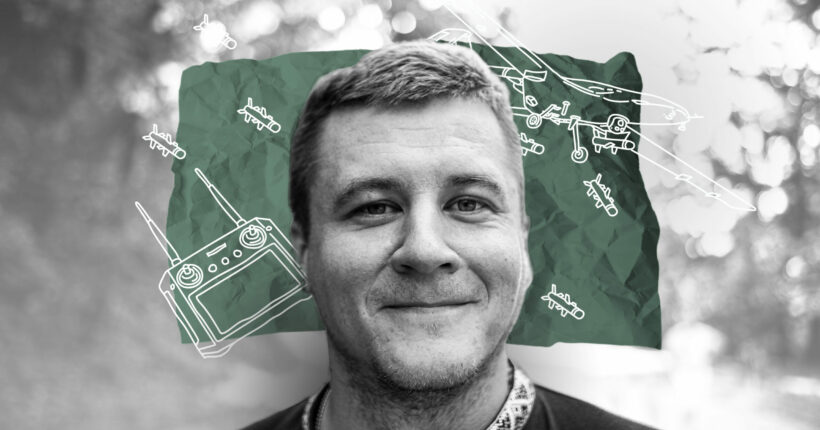
On August 2, the soldier and his comrades were in the trench and performed the task of adjusting the artillery with the help of UAVs.
As soon as the unit took off and began to inspect the area, an enemy tank came out and started firing at us. At the ninth time, it hit the edge of the trench. The shrapnel hit all four who were there, including Vynarchuk. Fortunately, all soldiers survived. Two pilots have badly damaged hands and knees. Vynarchuk received multiple fragments in his right leg. After a short treatment, it turned out that the leg could not be saved. The council of doctors decided to amputate, and the soldier had no other choice but to agree.
"I called my wife and said that my leg was amputated. She is a very positive person and has a great sense of humor. She said, 'That's the dumbest joke I've ever heard.' And I answered: 'It's not a joke,'" Vynarchuk says with a smile.
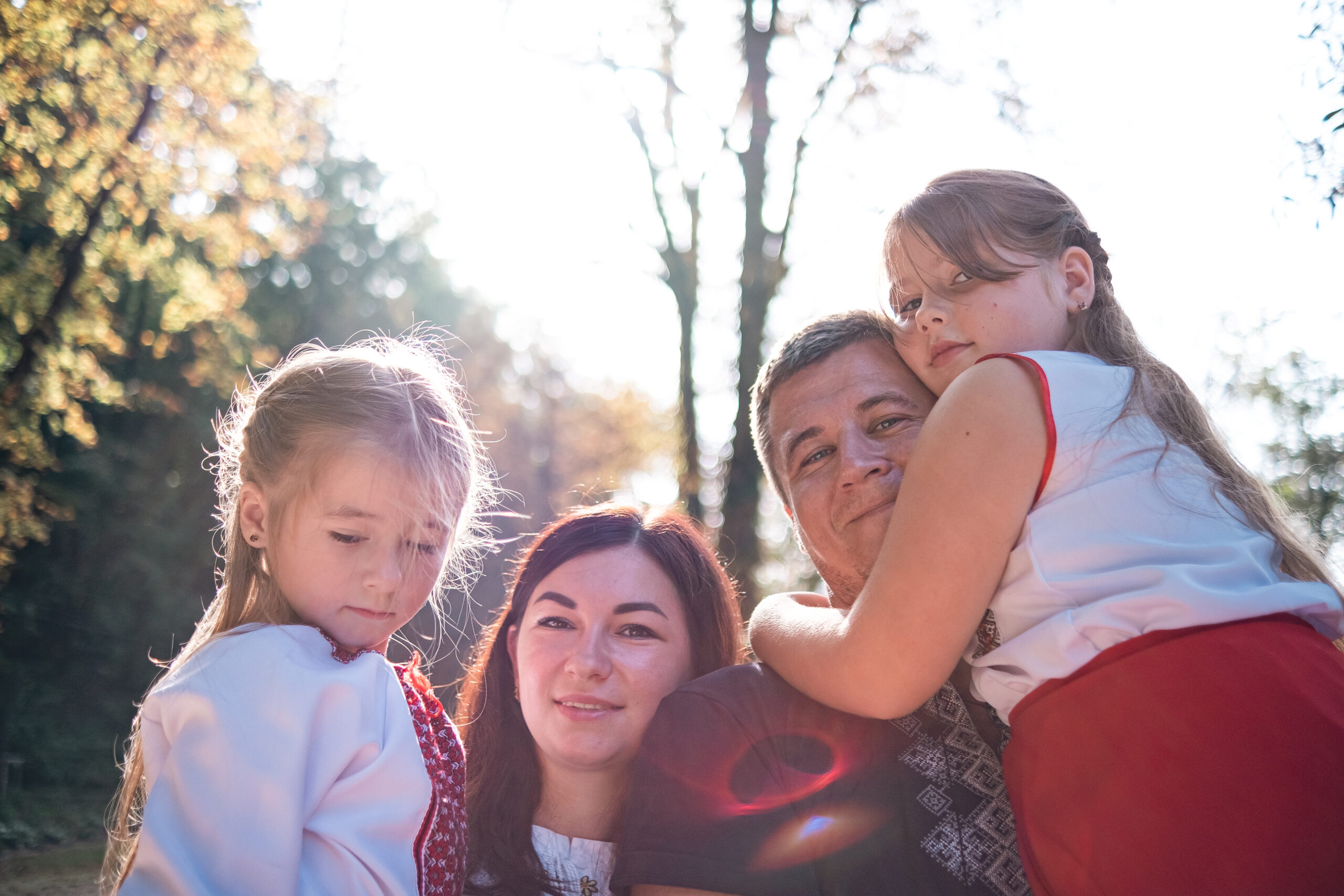
Taras Vynarchuk with his wife and daughters.
"You can't put a stump on the scanner…"
After some time, the soldier was taken to Lviv for further treatment. After severe trials, the question of prosthetics arose. "My hospital roommate told me that a volunteer is looking for someone with an injury above the knee for new prosthetics and rehabilitation abroad. That's how I got involved," says Vynarchuk.
After some time, the project coordinator, Nadiya Stechyshina, contacted him. After quickly coordinating and processing all the documents, Vynarchuk went to Estonia. The soldier went through the complicated procedure of going abroad in two weeks. The Ministry of Health of Ukraine helped the foundation team with this.
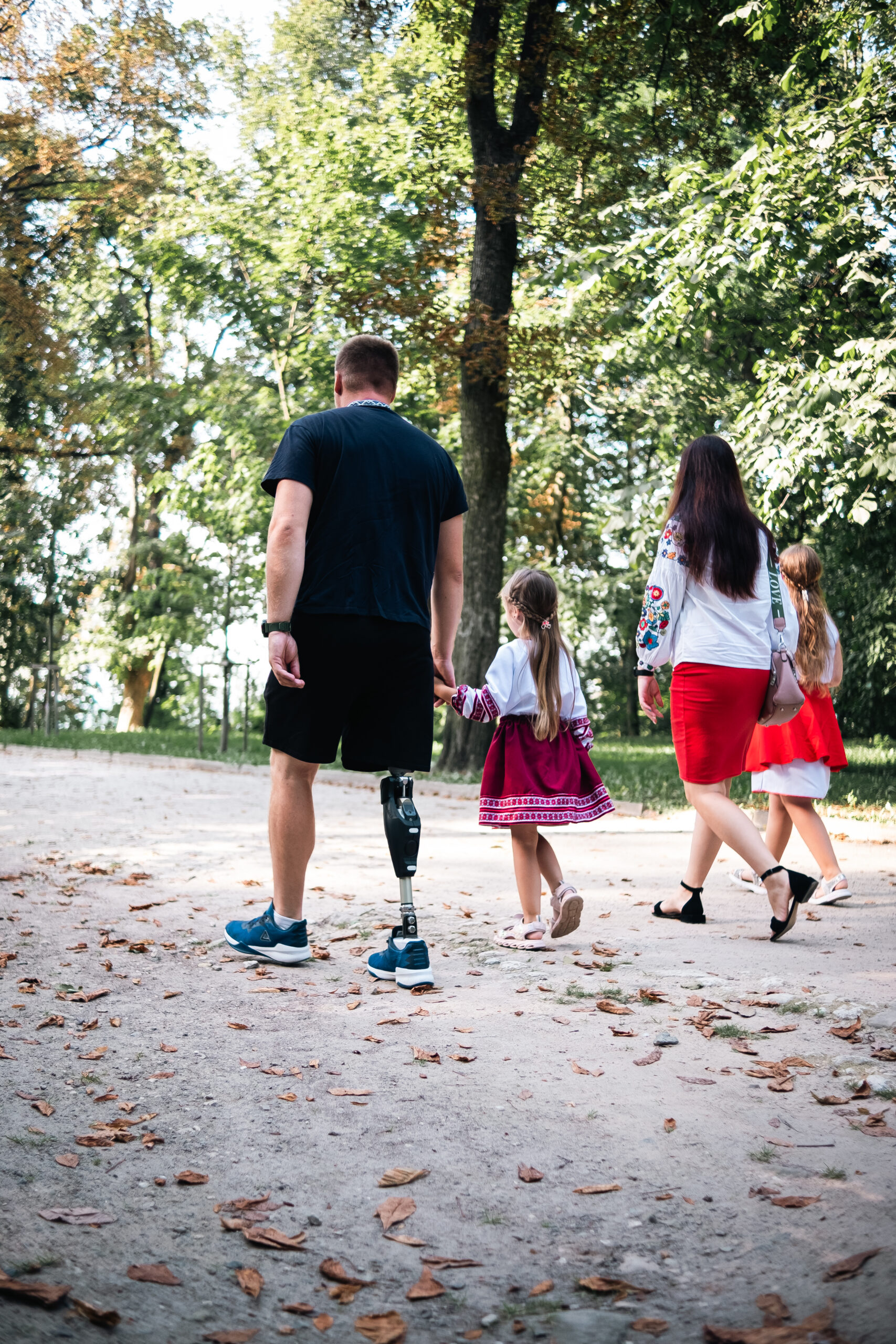
The Vynarchuks.
It was not without curiosities: data was not uploaded to the system for a long time at the border point. However, Vynarchuk was able to solve even technical problems with his optimism: "Can't you see that the boys are going for treatment?!" he said with a smile during the examination, pointing to the amputated leg. Then he added with understanding: "And you can't put a stump on the scanner." This is now a catchphrase for the foundation team.
A new limb and an old dream
Vynarchuk spent three weeks in Tallinn — he received a Genius X3 electronic prosthesis and performed special exercises for his new legs for an hour and a half daily.
The soldier initially thought about biometric prosthetics, but now he is satisfied with the electronic one. The prosthetic has several modes — walking, cycling, running, and fixing the leg in one position. It is more convenient than a mechanical one, and it is also more functional.
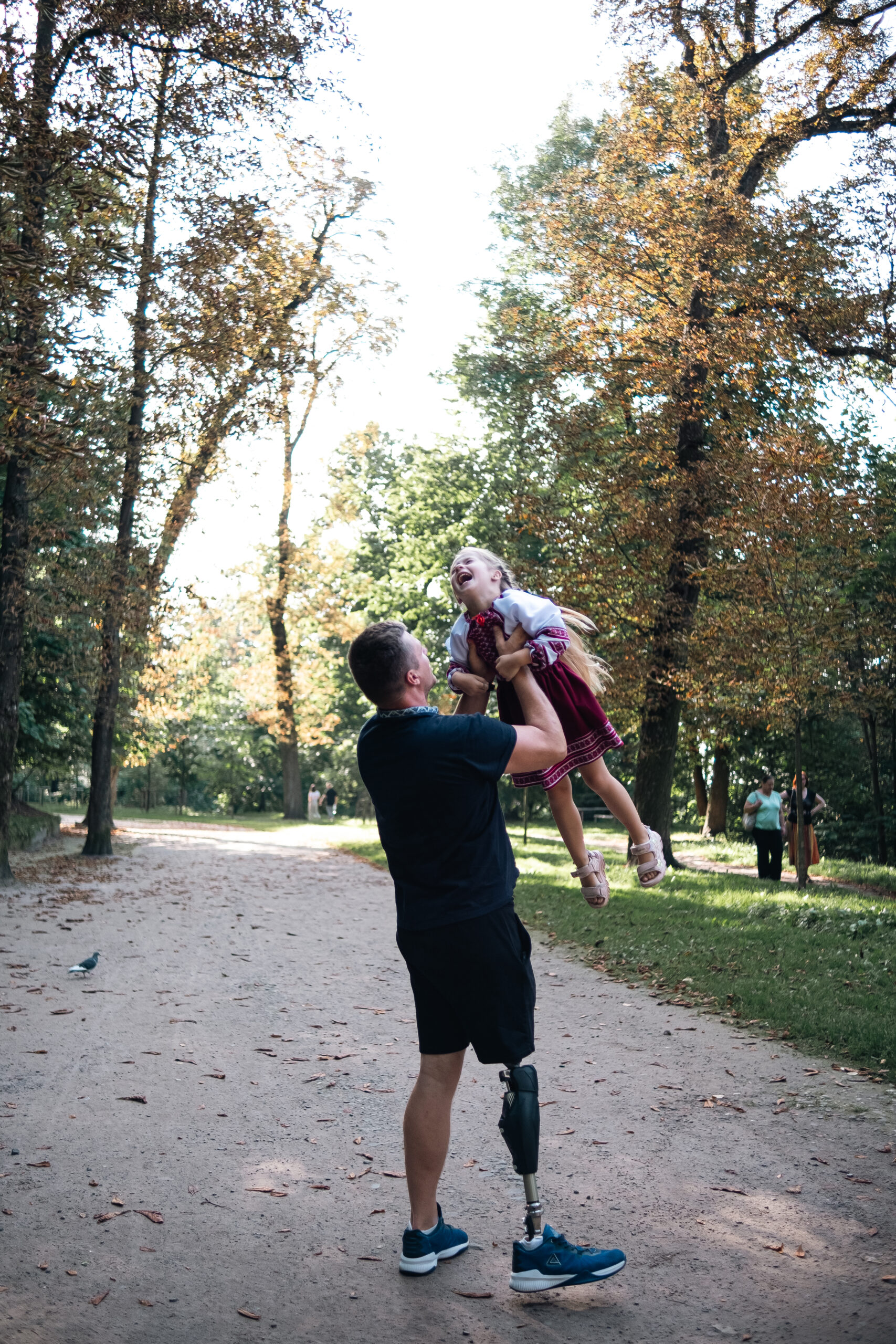
Thanks to the prosthesis, Vynarchuk can walk up the stairs, run, ride a bicycle and, of course, keep up with his active daughters.
The main feature of such prostheses is the mobile application developed for them, which can be easily downloaded to a smartphone. Thanks to this, it is possible to view, select, and enable all modes of the prosthesis. For example, if you choose the running mode, the prosthesis will begin to bend faster in the knee area and adjust to the second leg. With the mobile application, users can quickly and easily switch modes for any need.
"My only problem is that now I can't actively run because of the outgrowths on the bone — they cut into the muscle, and it hurts. Another operation will solve this problem, and there will be no restrictions. The functionality of the prosthesis is enormous. I am very pleased and grateful for it," says Vynarchuk.
On the very first day after returning to Ukraine, the soldier went home to the Lviv region — to his wife and two daughters. He says that if the children initially did not understand why dad's leg became different, now they even know about different types of prostheses.
"At first, the youngest daughter was afraid of the metal leg — the children thought I would come with the real thing. My wife told them that dad would come with a leg. Of course, they could not imagine what it was because they had never seen it," Vynarchuk smiles. "The little one was scared, and the older one approached and touched with caution. Literally, in three weeks, the children got used to it. Then, my comrades visited us during holidays, so the children had already seen many such prostheses. For them, this is now a normal topic, and they even understand how prostheses work," the soldier shared with Rubryka.
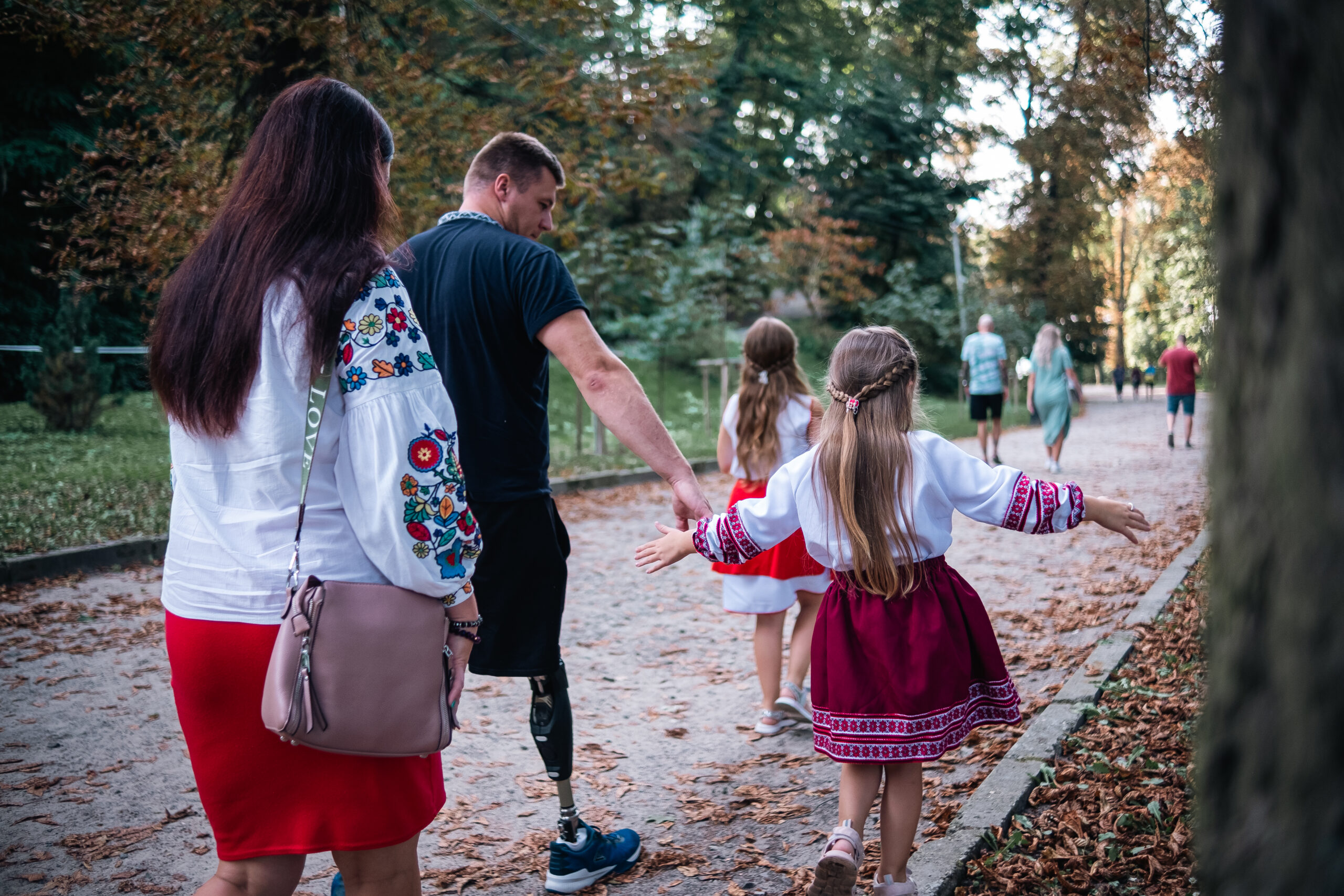
Despite the fact that at first the children were afraid of dad's "iron leg", now they are used to it and even know different types of prostheses.
Before the war, Vynarchuk worked in the food industry. After recovery, he plans to start his own business and is already taking the first steps in this direction with the help of the BGV Charitable Foundation.
"I built a kitchen on wheels and traveled to festivals. Then I discovered an American breakfast — bacon, egg, beans. It's just great! And then I want to open just such an American hangout. Where there is coffee on tap, breakfast, but that's after the war," says Vynarchuk.
The soldier got a chance for a new, full-fledged life even though the enemies destroyed the old one. However, thousands more like him need similar help, which would not be possible without your support.
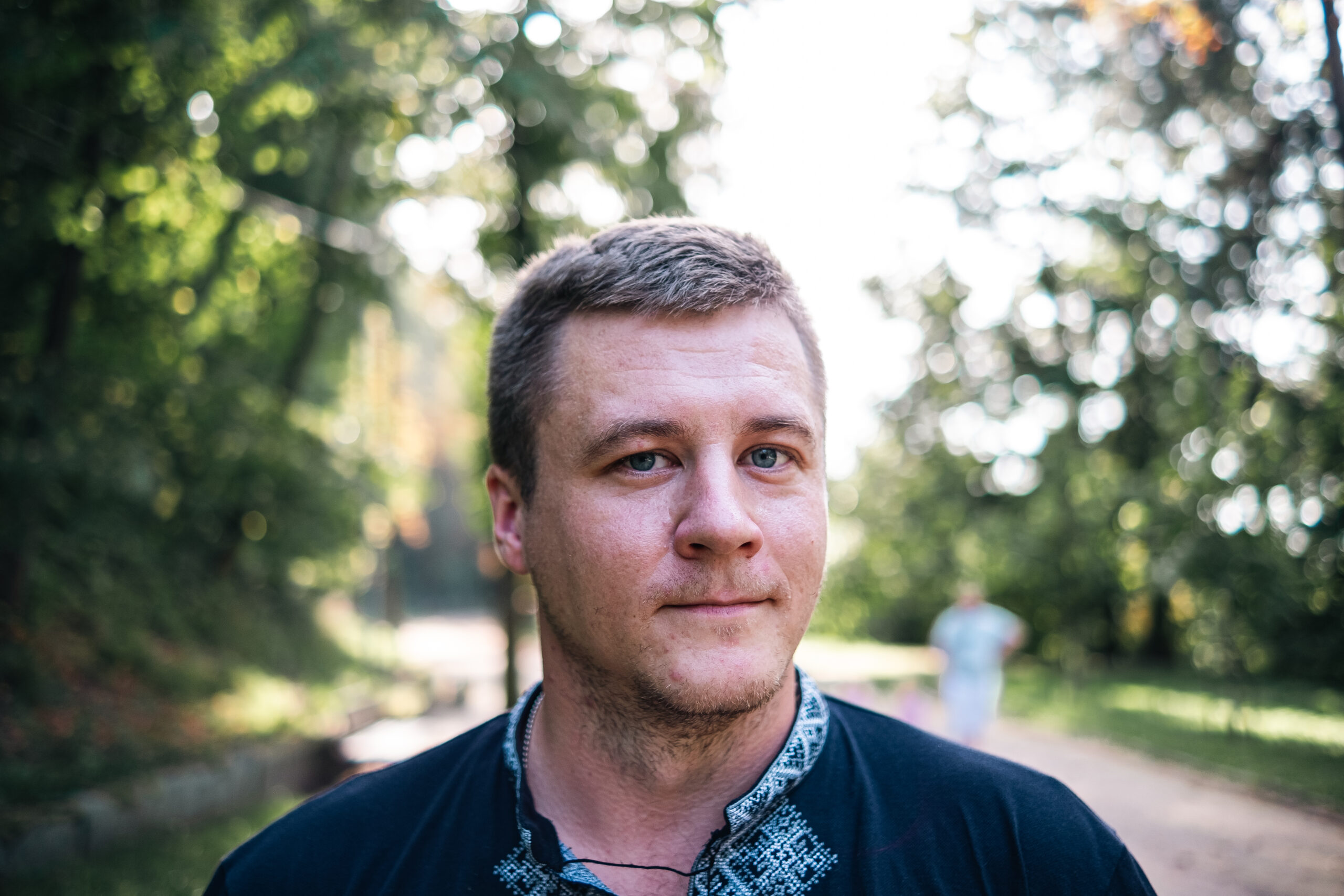
Thanks to the prosthesis, the soldier can live actively and fully. Every defender deserves the same right.
The series of materials Faces of Strength was created within the framework of the special project of the Ukrainian Charitable Foundation BGV and solutions media Rubryka as a way to express gratitude to the Republic of Estonia for the systematic support and with great hope for the continuation of the program on prosthetics of Ukrainians. You can support the prosthetics of Ukrainian defenders by clicking HERE. Your contribution will go towards covering logistics costs for program participants.








